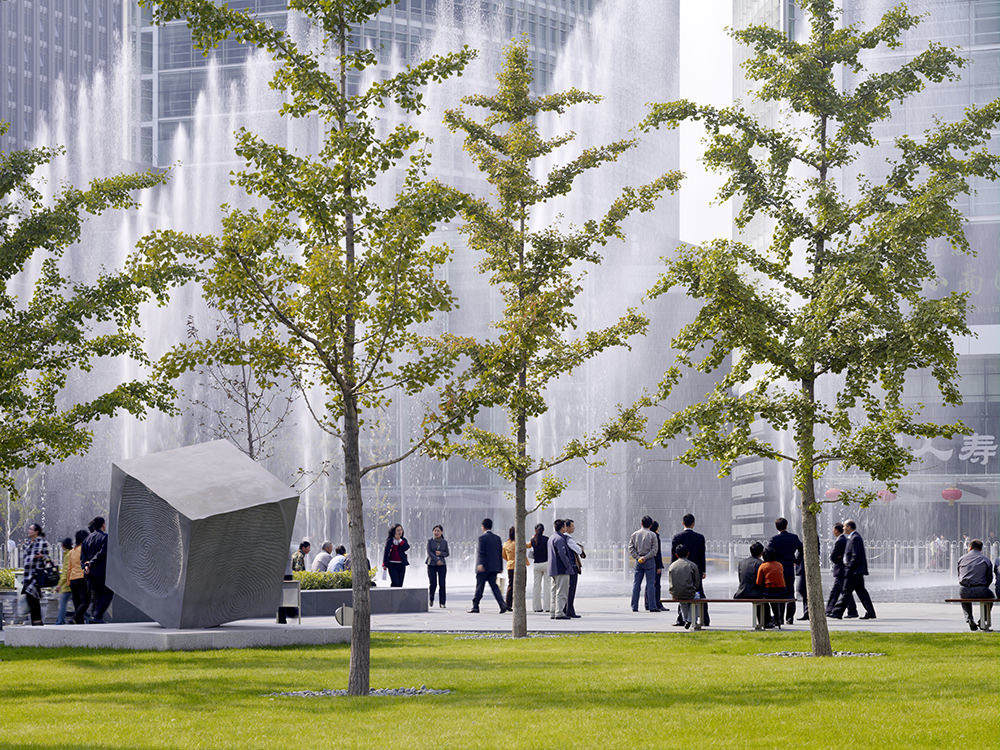
An 860,000-square-meter, mixed-use development with offices, hotels, retail space, service apartments, and a curving central park, Beijing Finance Street aims to become a neighborhood that stays active day and night, seven days a week. “We wanted to create a different model of urbanism for Beijing,” states Michael Duncan, a director in the San Francisco office of Skidmore, Owings & Merrill (SOM). “It’s all about place-making, rather than creating individual buildings,” he adds. To that end, SOM worked with the landscape architecture firm SWA to design a large public park at the core of the project and a series of smaller gardens and courtyards tucked within and around the buildings. In a city with few neighborhood parks or outdoor spaces scaled for casual relaxation, Beijing Finance Street provides important amenities.
“We didn’t want this to be like other new parts of Beijing where large, bulky buildings occupy entire blocks and pull back from the street,” explains Duncan. So he and his team designed relatively thin buildings that hold the street edge and encourage pedestrian activity. Three levels of parking sit below each of the 18 buildings on the site and connected to each other so cars and trucks can move below ground, out of the way of pedestrians. The architects pushed offices to the noisier outer parts of the eight-square-block area, while allowing the two hotels and 328 housing units to enjoy the quieter and sunnier area looking onto the main park. SOM also designed a 90,000-square-meter, crescent-shaped shopping mall with an enormous glass roof that floods the interiors with daylight. “We saw the shopping atrium as an indoor civic space, complementing the park outside,” says Duncan.